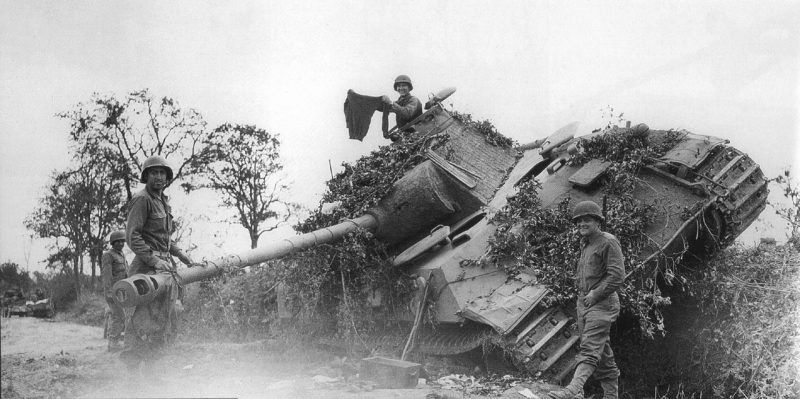Operation Cobra was as important to the Allied war in France than the D-Day landings themselves. The success of the battle was the moment the route opened to liberate France from the Nazis, while also showing some serious cracks in Adolf Hitler’s facade.
When Allied forces successfully established beachheads after the Normandy landings, the next course of action was to fight their way off the beaches and inland. This is what Operation Cobra was supposed to do.
Despite heavy American losses at Omaha Beach, the D-Day landings ran smoothly. This was down to the fact that Hitler thought the main target of the invasion would be the Pays de Calais area, which meant a great deal of military hardware wasn’t available for the defense of Normandy.
However, when the Reich learned of the Allied intentions, they moved a large amount of equipment and men to the landing sites – which made breaking out more difficult than breaking in.
By mid-June, the Axis forces had reinforced their positions around Normandy. Operation Cobra was the grand scheme to defeat their defenses and open up a corridor to Paris.
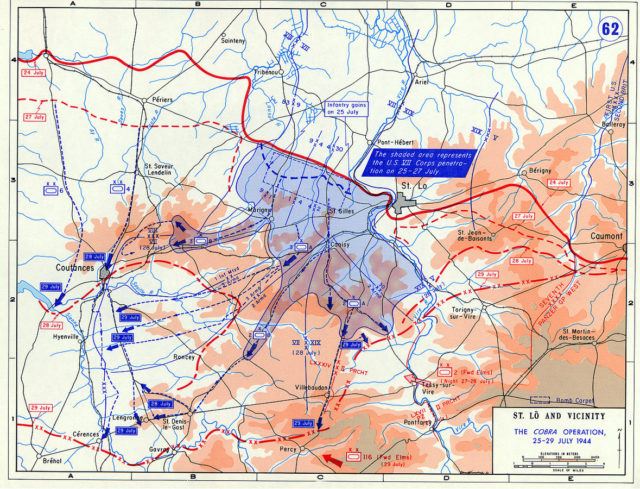
The offensive was actually part of a joint British and Canadian effort to secure to the whole of Brittany, as well as the deep-water port at Cherbourg. For them, taking Caen was the priority – they thought to control the city was vitally important to making a successful march on Paris.
American Lieutenant General Omar Bradley wanted to use German preoccupation with the British and Canadian attack around Caen to punch his way through the Axis defenses around the Normandy beachhead.
Bradley planned to focus his advance on a 7,000-yard piece of land in front of the Saint-Lô–Periers Road, which was subjected to heavy bombardment from the air.
When the bombing was completed, the plan was for the 9th and 30th Infantry Division from Major General J. Lawton Collins’ VII Corps to push on and open a breach in the German line.
Once that had been done, the 1st and 2nd Armoured Divisions would then drive through the gap – and would be supported by a six division force to exploit the breakthrough.
The success of Operation Cobra would let American forces escape the small hedgerows of Normandy that restricted their use of armor and cut off the Brittany peninsula from German forces.
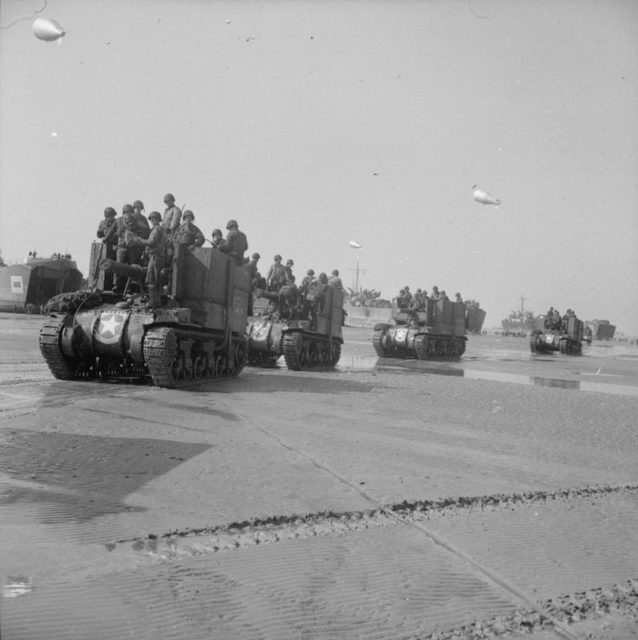
In support of this, Operation Goodwood and Operation Atlantic were dreamed up by Lieutenant General Sir Miles Dempsey. These would attract enemy attention away from Cobra, hold their Panzer divisions in place and capture Caen.
Goodwood and Atlantic commenced on the 18th of July, but Bradley delayed his advance for a few days because of bad weather. On the 24th of July, aircraft began to strike the target area despite the adverse weather conditions, killing 150 Allied troops due to friendly fire.
The weather stubbornly refused to clear, and an astonishing 600 men were struck down by further friendly fire once the operation had begun – including Lieutenant General Leslie McNair.
Early in the morning of July the 25th, the American soldiers were slowed down by strong German resistance and strong points. Despite only gaining around 2,000 yards of territory, the Allied high command was optimistic that their objective could be met over the coming days.
The next morning the 2nd Armoured Division and the 1st Infantry Division joined the assault, supported by the VIII Corps who attacked German positions to the west.
Despite meeting heavy resistance from enemy armed with heavy weapons, the Americans quickly figured out that there wasn’t one coordinated line of defense, merely pockets of resistance that could be outflanked or simply traveled around.
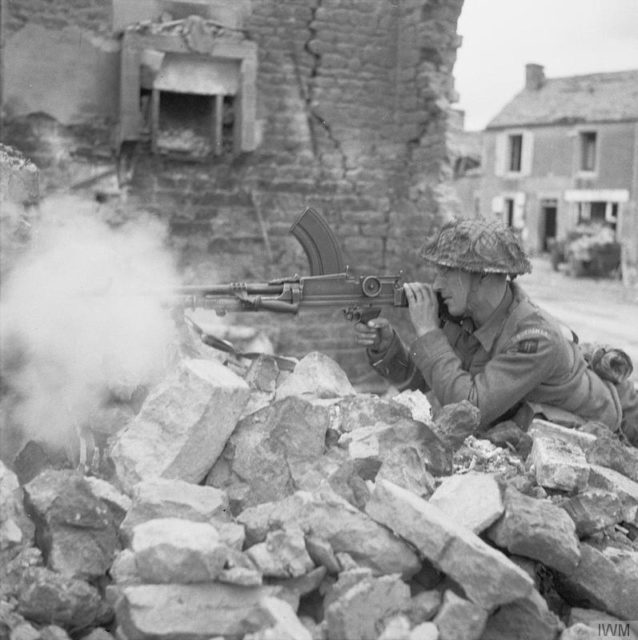
Fighting was heavy on the 26th, but started to relax on the 27th as Axis men began to retreat in the face of overwhelming Allied pressure.
Operation Cobra drove German resistance south, which led to American men taking the town of Coutances on the 28th – even though they met stiff resistance from German troops towards the east of the settlement.
On the 28th the enemy 2nd Armored Division mounted a desperate counter-attack, which was an unmitigated disaster and resulted in the division’s complete annihilation. Because of the failure, those left alive in the 2nd Armoured Division abandoned their vehicles and fled on foot.
As a response to this, enemy Field Marshal Gunther von Kluge sent reinforcements to meet the Americans. The XIX Corps met these on the left flank of the VII Corps, and prevented the 2nd and 116th Panzer Division from smashing into the American advance, while fighter-bombers provided close air support throughout the area.
The Americans began to move forward along the coast, and British commander Field Marshal Bernard Montgomery told Demsey to commence Operation Bluecoat, in which British forces marched from Caumont towards Vire.
The objective of this was to protect Cobra’s flank by fixing German armor in the east to their positions. It was a great success, and as British forces advanced, their American brothers captured to the town of Avranches – which opened the way into Brittany.
German forces then launched a counter-attack, but the XIX Corps turned them back. This was the precursor to Bradley’s men escaping the bocage countryside, which limited the mechanized units from reaching their full effectiveness due to the rough terrain.
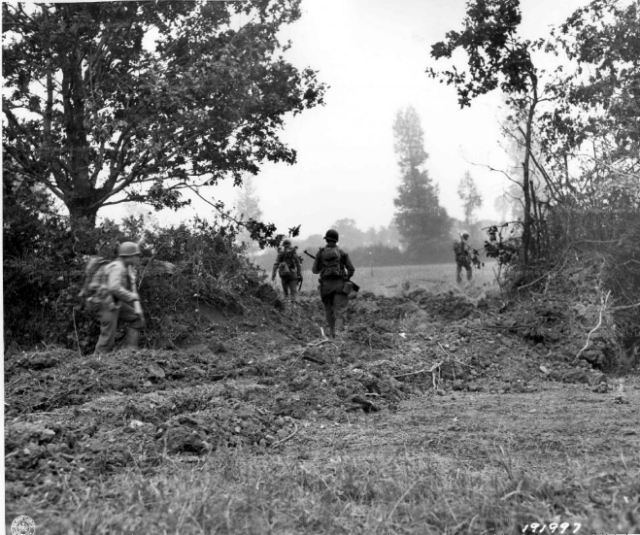
Once they did so they drove the enemy forces before them with great success. In response to this, Hitler made one fatal mistake – a mistake that proved he did not understand the severity of the situation or the real conditions on the ground.
The Fuhrer ordered Marshal Kluge to counter-attack using eight Panzer Divisions, but up to four of these divisions had taken such a beating during Operation Cobra that they were not in any fit shape to launch an attack on the enemy.
Despite protests from senior German officials, Hitler would not be overruled. The ill-fated Operation Luttich began on the 7th of August, but ended on the 8th. Out of eight divisions, the Axis powers could only find 177 tanks and guns that were fit for use.
At this stage of the operation, it was a case of when not if, American troops would rout the German military from France and liberate Paris. Le Mans was seized back from Axis powers on the 8th of August, by the 19th of August Allied troops had nearly fully encircled the German 5th and 7th Panzer armies in the Falaise Pocket.
Between the 19th and 22nd of August, 100,000 enemies united escaped through the pocket – but by the 22nd the Allies closed the gap and 10,000 enemy soldiers were dead, along with 50,000 enemies taken captive, 350 tanks and 2,500 military vehicles.
